Laboratory for Advanced Materials Science and Technology (LAMSAT)
LAMSAT Characterization Facilities
In-situ Optical Diagnostics (Imaging and Spectrum)

Dynamic plasma optical spectrum analysis
The in-situ optical plume diagnostic system located at LAMSAT can be used for two-dimensional
time-resolved and/or time-integrated imaging and spectroscopic analysis (UV-Vis-NIR)
of the emitted light from the laser-ablated plumes. The set up is equipped with Princeton
Instruments Pi-Max high speed (< 5 ns) Intensified Charged Coupled Device (ICCD) camera
with 512 x 512 pixels resolution.
This system can also be combined with the patented two-dimensional optical filter
developed at LAMSAT for spectrally filtered imaging.
Ferroelectric Tester with Micoprobe Station
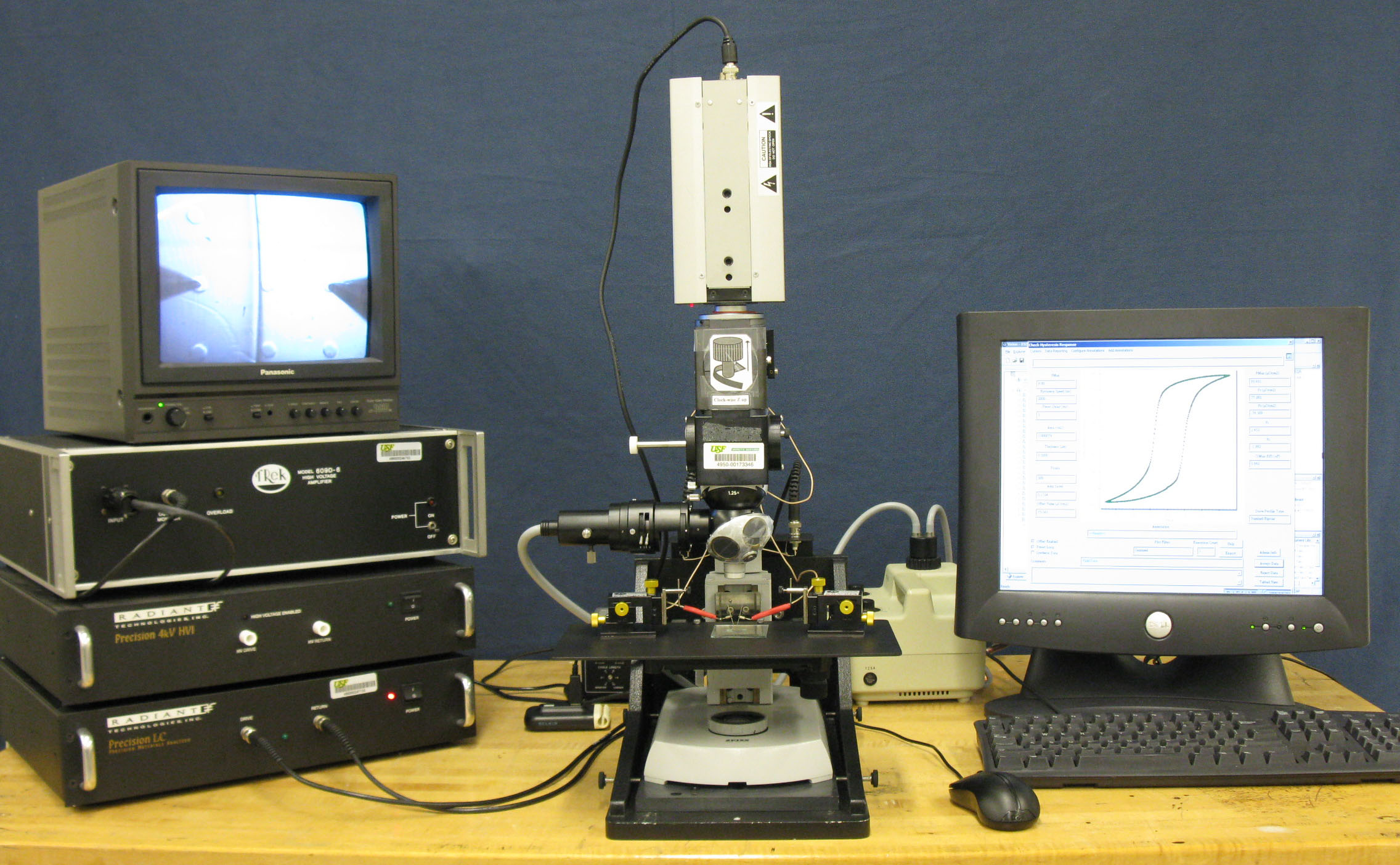
Ferroelectric tester
This instrument available at LAMSAT has been specially designed and assembled for
measuring the ferroelectric properties of thin-films. The set-up consists of a Precision
LC Materials Analyzer (ferroelectric tester), an optical microscope with video monitor,
a probe station, and control PC. The Zeiss microscope is equipped with a video camera
for monitoring microprobe position. The probe station includes sample stage holder,
x-y-z micro-manipulators and pole pieces. The micro-manipulators on the probe station
are KRN-01A 'DC' positioners from J-Micro Technology. In addition this system is also
capable of I-V, C-V, leakage current, and resistivity measurements.
Temperature-Dependent Hall Effect and Resistivity Measurement System
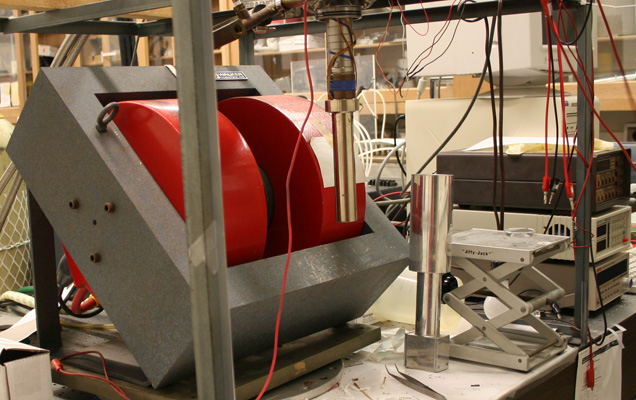
Hall Effect measurement system
The Hall Effect and resistivity measurement system available at LAMSAT is used for
electrical characterization of thin films. The computer controlled system is equipped
with a compressed He cryostat which can be cooled to 15 K for performing temperature-dependent
measurements.
XRD (Physics Materials Diagnostic Facility)
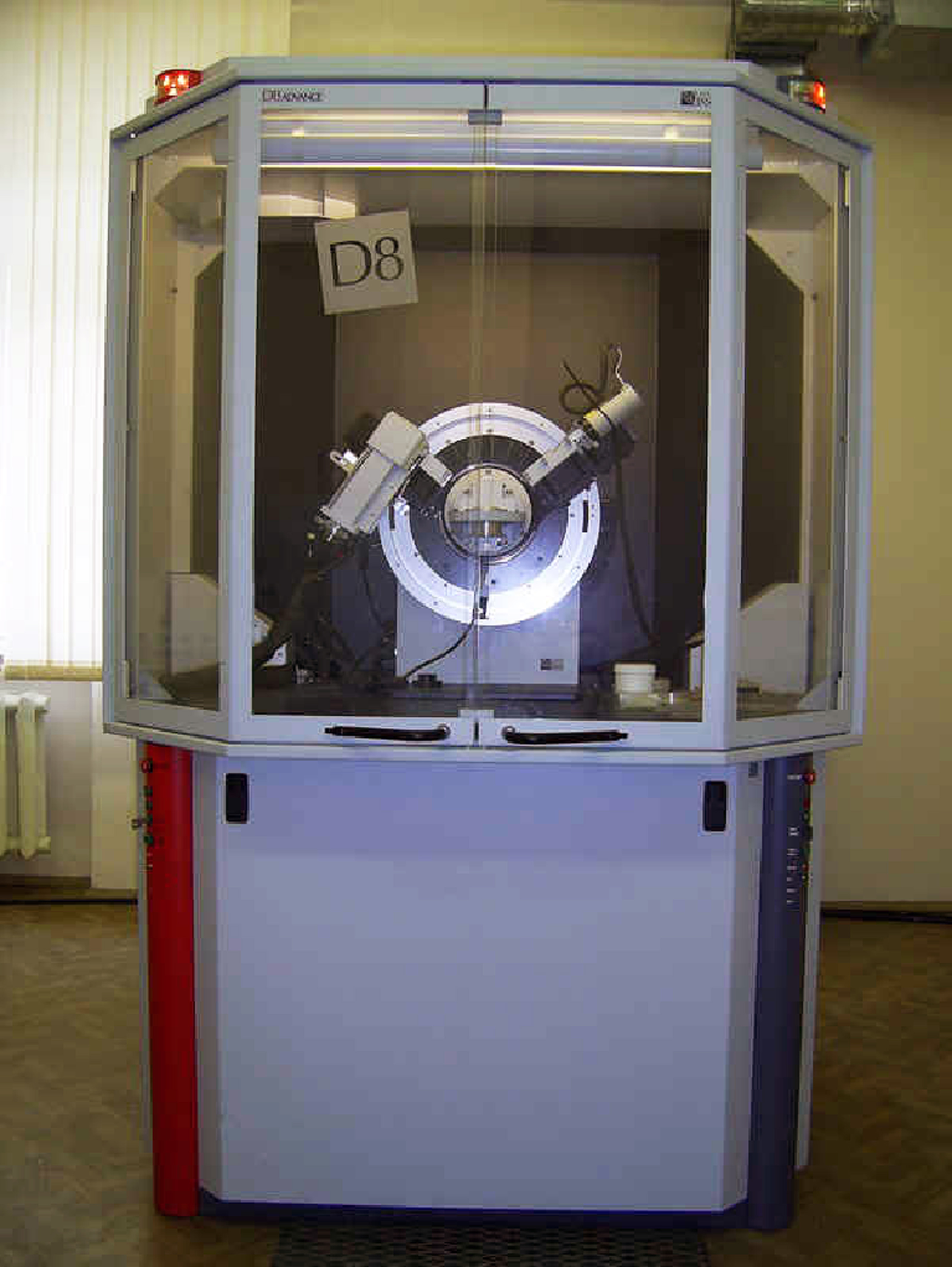
XRD
LAMSAT members have access to equipment in the Physics Materials Diagnostic Facility
(PMDF) which includes a Bruker D8 Focus X-ray Diffractometer (XRD). The XRD is used
for structural characterization such as the crystallinity of thin films, including
lattice parameters, identification of unknown materials, orientations of single crystalline
films, preferred orientations of polycrystalline films, defects, stress, etc. The
system can perform all linear scans such as θ-2θ scans, 2θ-ω, asymmetric or detector
scans, and rocking curves.
SEM (Physics Materials Diagnostic Facility)
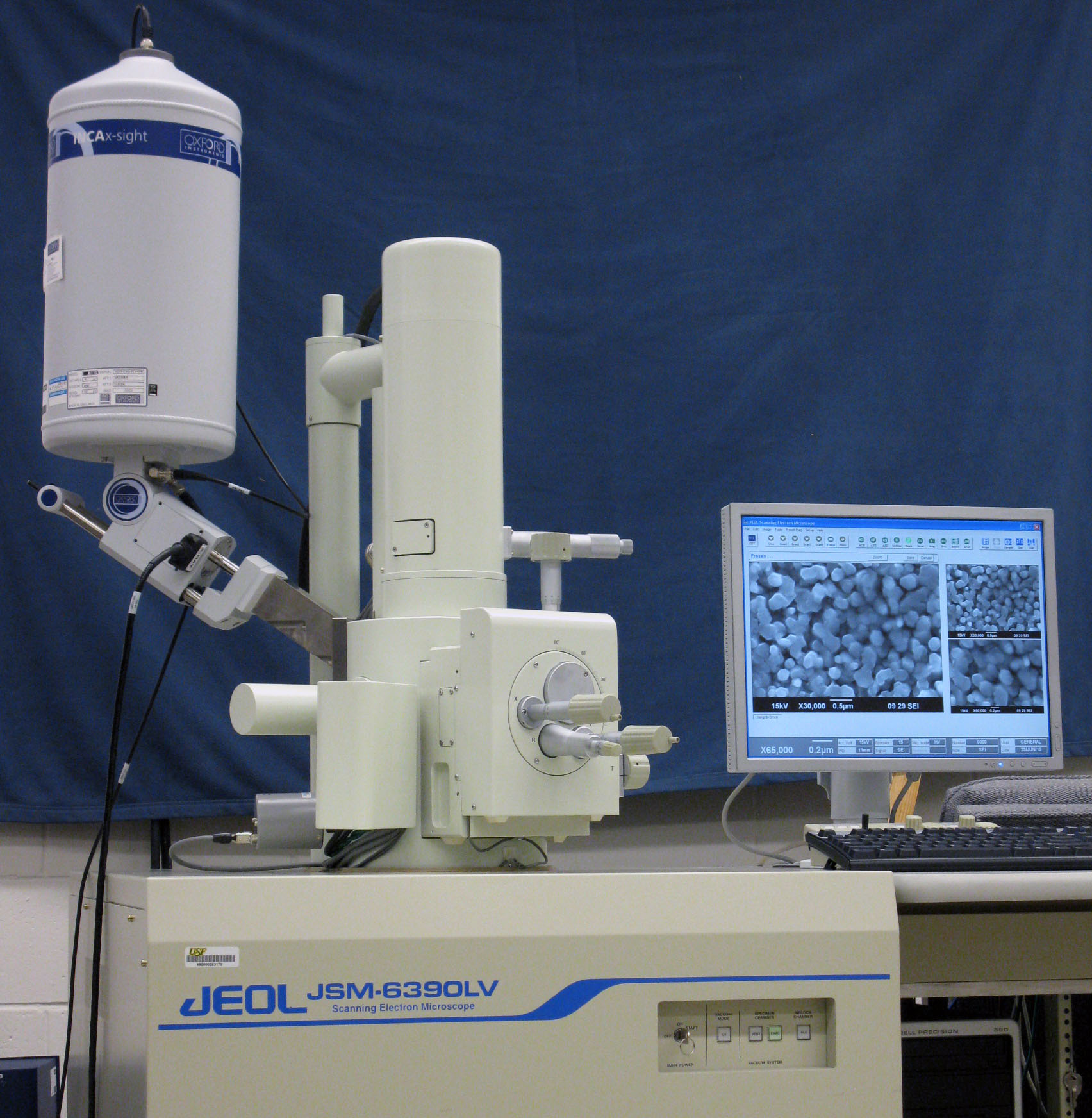
SEM with EDS
LAMSAT members have access to equipment in the PMDF which also includes a tungsten
filnament JEOL JSM-6390LV Scanning Electron Microscope (SEM). The microscope is equipped
with secondary electron imaging (SEI) and backscattered electron imaging (BEIW) detectors
for compositional contrast, topographical, and shadow imaging. The SEM is used to
characterize the surface morphology of thin films, powders, and biological samples.
The SEM has a maximum resolution power of 3 nm at an acceleration voltage of 30 kV.
The magnification could be varied from 5x to 300,000x. It is also equipped with an
energy dispersive spectroscopy (EDS) detector from Oxford Instruments INCA x-sight
for compositional analysis.
Typical applications include:
• Imaging surface morphology of thin films and powders
• Cross-section imaging of multilayer thin films or nanocolumn coatings
• Composition of powders and thin films
Raman Spectroscopy (Physics Facility for Optical Characterization of Materials)
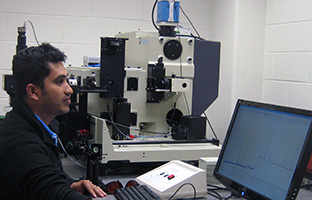
Triple spectrometer Raman system
The T64000 system is designed to provide a versatile platform for Raman analysis.
It has an integrated triple spectrometer design for unprecedented optical stability.
The instrument incorporates the proven technology of the confocal LabRAM Raman microprobe.
The mechanical coupling is rigid and stable. The optical coupling is efficient and
throughput is limited only by theoretical considerations. The main features are:
• High stray light rejection
In using the double subtractive configuration of the T64000, it is possible to obtain
spectral information very close in to the laser line. The subtractive mode is ideal
for studying such detail as crystal lattice modes.
• Ultra high resolution
With the use of the ultra-high resolution triple additive configuration of the T64000
triple system, it is possible to very accurately study the position of Raman bands.
• Single spectrometer
With the final mode of operation, the direct spectrograph entrance, the system can
be used with holographic notch filter technology and as a more conventional single
spectrometer based system. The high throughput of the large optical components means
that it is then ideal for Raman mapping and even remote probe forms of analysis.
• UV Raman Spectroscopy
The high stray light rejection enables lower frequency Raman bands below 100cm-1 to
be observed even in the deep UV (244nm). It can provide a complete spectral analysis
not limited in its scope or range.
Zetasizer Nano S (Physics Facility for Optical Characterization of Materials)
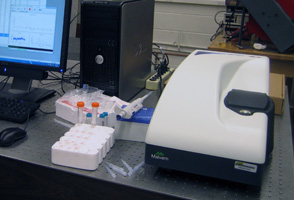
Zetasizer Nano S
Malvern Instruments' Zetasizer Nano series can measure:
• Particle size
Non-invasive back scatter (NIBS®) technology takes particle sizing to new levels of
sensitivity in the 0.6nm to 10 micron range. The new Zetasizer Nano-S is the choice
for the accurate, reliable and repeatable size analysis of particles and molecules
in solution.
• Molecular weight
Using static light scattering (SLS) and the classical Debye plot, the molecular weight
of random coiled polymers up to 5 x 105 Da as well as globular polymers and proteins
up to 2 x 107 Da can be determined without the necessity for multi-angle measurements.